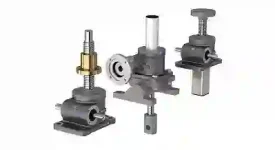Rotary valves are mechanical devices that are used for the continuous discharge of bulk solids. They provide accurate speed control and regulation. They are also suitable for use in a pressure or vacuum system. The following information will provide more information about rotary valves. This article will explain why they are used and what their specific advantages are.
rotary valves are mechanical devices used for the continuous discharge of bulk solids
There are many different types of rotary valves. Each one is designed for specific tasks. Some are open end, while others are closed-end. Other types include metering, helical, and reduced volume rotors. Typically, rotary valves have 8 or more vanes. The size of the rotor determines the filling efficiency and sealing capacity. The blades can be square, beveled, or even mounted with flexible seal strips.
The main disadvantages of open rotor valves are the increased wear and tear on the valve due to the presence of abrasive materials. This can shorten the valve’s life. Moreover, the valve must be precisely machined, especially in high-temperature applications. Further, fine materials can leak out through the shaft seals. Thin flakes can also get trapped between the end cover faces and the rotor vanes, which can cause the valve to stall.
they provide accurate speed control and regulation
Rotary valves provide accurate speed control and regulation and are used in a variety of industrial applications. Their design is dependent on the application and can range from closed-end to open -end, and from metering to reduced-volume. Typically, rotary valves have up to eight vanes. The number of vanes used depends on the type of material and the speed at which the valve is operated. Some rotary valves have replaceable vanes to allow for varying amounts of rotor wear.
A rotary valve is the ideal solution for this application. These valves function as airlocks and can be installed to feed screw feeders and pneumatic conveying lines. They can also be used to feed bulk solid processing equipment, such as drums. In addition to providing accurate speed regulation, rotary valves are available to isolate external conditions, which is a critical feature for these applications.
they are suitable as rotary automation valves
There are a few important factors to consider when choosing a rotary valve. First of all, the type of application you are putting it into will determine the appropriate rotor speed. This is particularly important if you are using the valve for vacuum or pressure systems. Different types of rotary valves have different speeds, and the proper speed for your specific application will determine how efficiently and safely it
will operate. You should also consider the material properties and flow coefficients when choosing a rotary valve.
A rotary valve is comprised of a valve body, a rotor, a shaft seal, and a drive mechanism. The rotor is powered by a motor that rotates it. The blades and rotor work together to draw material through the valve and then discharge it from the outlet. A rotary valve can have inboard or outboard ends. It also has a valve housing that constricts the bulk material. These valves are available in many different materials. For the food and dairy industries, it is advisable to choose valves that have special coatings and highly polished finishes.
they are rated for a pressure or vacuum system
When considering which valves to purchase for a given application, it is important to determine how much pressure and/or vacuum the valve will need to handle. A rotary valve is rated for the pressure and/or vacuum it can handle, which is important for the overall efficiency of the system. There are many different types of rotary valves, each suited for a different task. These include closed -end, open-end, metering, helical, and reduced volume rotors. They are generally equipped with eight or more vanes. The higher the number, the greater the sealing capacity and filling efficiency. Some rotary valves are designed with replaceable vanes, although this is rare for big rotary valves.
The rotor speed is another factor to consider when choosing a rotary valve. A rotary valve’s throughput rate is directly related to its speed, and determining the appropriate rotor speed will help maximize efficiency and reduce maintenance. A typical rotary valve is rated for a maximum of 40 meters per second, but can be higher or lower depending on the materials it will be handling. https://polimak.com/








